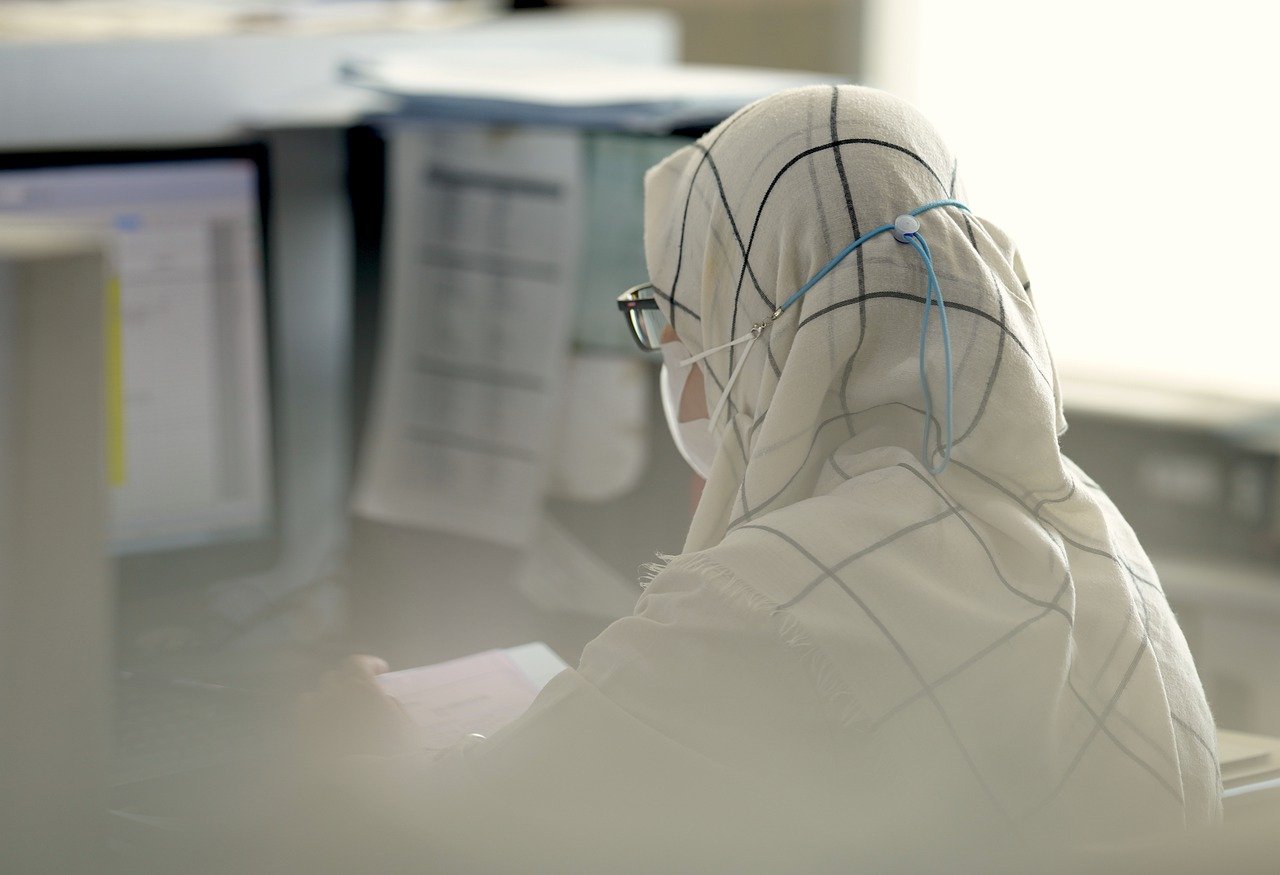The word hijab is derived from Arabic and means ‘cover’ or ‘veil’. The hijab usually refers to the clothing worn by women to cover themselves outside of their homes and from non-mahrams (with whom nikkah is permissible). Nowadays, the word hijab has different meanings, from a headscarf to a full-body covering. This blog will explore what is a hijab, different types of hijab, its purpose, and what Allah SWT and Prophet Muhammad PBUH say about it.
The Purpose of Hijab
In Islam, both men and women are commanded to dress modestly. For women, wearing the hijab has been greatly emphasized. The wearing of hijab has often been seen as oppression or old-fashioned, but the women who wear hijabs daily know that it is anything but.
This ‘piece of cloth’ protects their beauty from the outside world and safeguards them against the lustful gazes of men outside of their homes.
What Is the Significance of the Hijab?
Although the word hijab isn’t directly mentioned in the Quran and hadith, there have been many references where women are told to cover themselves.
Significance in the Quran
The Believing Women
In the Quran, in Surah Al-Noor, Allah SWT commands the believing women to lower their gazes [i.e., to not look at forbidden things that go beyond the opposite gender], to protect their private parts from any unlawful acts, and to don’t show off their adornment [anything that beautifies you].
Expect only the apparent body parts (i.e., like both eyes to see, or the outer palms, one eye), and dress like veils, gloves, headcover, or apron.
Allah SWT also tells the women to draw their veils all over their Juyubihinna, that is, their bodies, including their face, neck, and chest, and to not reveal their adornment except to their husbands, fathers, father-in-laws, sons, brothers, brother’s sons, sisters sons, their husband’s sons, and their Muslim sister (every woman is a sister of another woman in Islam). [Al-Noor 24:31]
This ayah continues onwards, in which there are other people in front of whom women don’t have to wear hijab, but one thing is clear: all women are supposed to cover themselves in front of any other person who isn’t mentioned in this ayah.
The Respectable Women
In another verse, Allah SWT is saying to the Prophet PBUH to tell his wives, his daughters, and the women of the believers to cover themselves with their veils all over their bodies, except for their eyes or one eye to see the way. In that way, this is better, and they should be known as free, respectable women so as not to be annoyed. And Allah is the most merciful and ever-forgiving. [al-Ahzab 33:59]
Significance in Hadith
Many hadiths tell us how women used to cover themselves, such as:
The Revealing of the Verse
In a Hadith, Safiya bint Shaibal narrates that Hazrat Ayesha RA used to say that when the verse of veiling was revealed, the ladies of that time cut their waist sheets as the edges and covered their heads and faces with the cut pieces of cloth. [Sahih al-Bukhari 4759].
Thin and Thick Veils
‘Alqama b. Abu ‘Alqama quoted his mother as saying that when Hafsa, the daughter of ‘Abd ar-Rahman, visited Hazrat Ayesha RA, she was wearing a thin veil, so Hazrat Ayesha RA tore that thin veil and covered her with a thick veil. Malik transmitted it. [Mishkat al-Masabih, 4375]
Good and Bad Persons
Hazrat Umar RA narrated that he said to the Prophet PBUH that good and bad persons enter upon you, so I suggest that you command the mothers of the believers, the women who are his wives, to observe veils. And then Allah SWT revealed the verses of the veiling. [Sahih al-Bukhari, 4790]
Veiling from the Slaves
Umm Salamah, Ummul Mu’minin narrated that Project Muhammad PBUH said to them that if any of them had slaves and he entered into an agreement to purchase his freedom and he could pay the full price, then they should veil themselves from him. [Sunan Abi Dawud, 3928]
What Is a Hijab Designed to Hide?
Today, there are many ways in which people cover themselves and say that they are wearing hijab. Most of these ways are not permissible and should be avoided if one is with non-Mahrams. But if a woman is with her mahrams, then she can wear the hijab or not. It is her choice.
But the true form of hijab that Allah has told women to observe in the presence of non-mahrams has rules that should be followed without fail. Let us discuss those rules in detail.
- The hijab should cover the entire body.
- Hands should be covered up to the wrists by the fabric.
- The feet should also be covered, including the toes. Though one can wear socks to cover the feet, it is preferred to cover them with fabric so that the foot’s shape is not defined.
In summary, women should try their best to cover everything, though the eyes can remain uncovered due to necessity, as Allah SWT mentioned in the Quran.
Types of Hijabs
Many types of hijab are worn in different parts of the world. Most of the hijabs differ from culture to culture, whereas others are different because of personal preference. Below, we will discuss some of the most popular hijabs.
Hijab
As the name suggests, it is a piece of cloth covering the hair, neck, and ears and leaving the face uncovered, and this is the most popular type of hijab in Eastern and Western countries.
Khimar
A khimar is similar to a hijab but covers the shoulders, neck, ears, and hair. It leaves the face uncovered. The khimar is also a very popular kind of hijab that is worn by many women all over the world.
Chador
A semicircle of cloth draped over the head like a shawl. A chador is not fastened with anything like a belt, but some people use pins to keep it from falling.
Niqab
A niqab is a veil covering the whole body except for the eyes. A niqab can be worn in two pieces or one piece. It is the second-most conservative kind of hijab.
Burqa
The burqa is the most conservative form of the hijab and veils the entire body, including the eyes. And for the ease of the women wearing it, in the eye area, there is a mesh covering that is sewn so that the eyes stay covered, and there also isn’t any problem in seeing the path ahead.
Conclusion
In short, wearing a hijab is a perfect way to follow Allah’s commands, safeguard yourself from the bad gazes outside of your home, and attain the pleasure of Allah SWT in worldly life and the hereafter.

